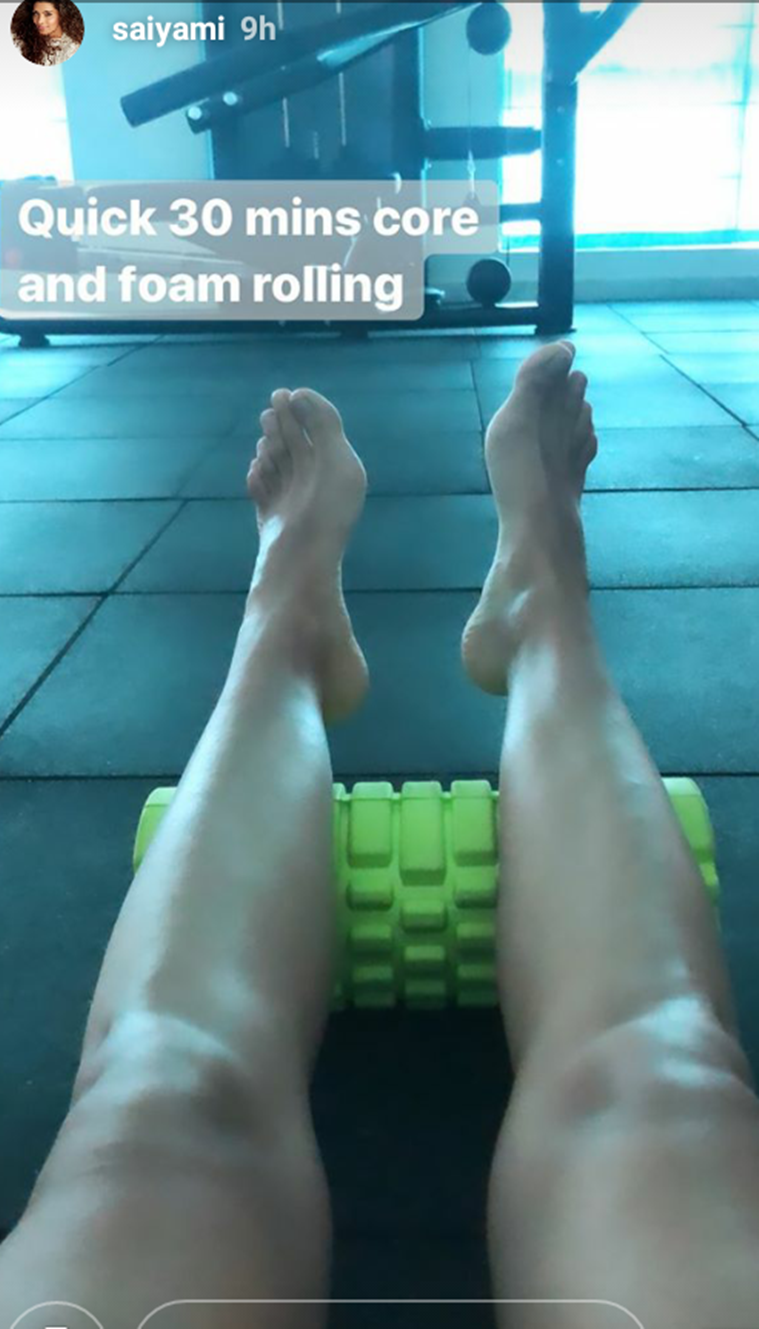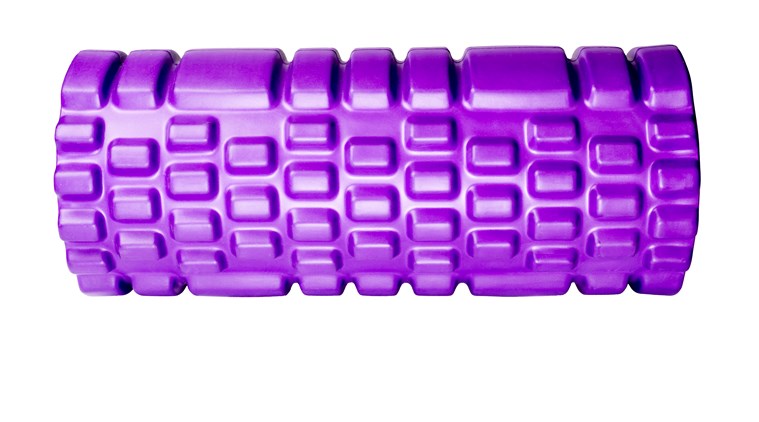Seek some fitness inspiration from Saiyami Kher and make foam rolling a part of your workout.

Whether you are an elite athlete or an amateur at the neighbourhood gym, muscle soreness tends to be a part and parcel of life. While people are well aware of the benefits of working out and stretches, they tend to overlook the fact that too much stretching of muscles can stand in the way of one’s workout. Looking for a solution? An effective way to counter muscle soreness besides other benefits is using a foam roller. Recently, actor Saiyami Kher posted an Instagram story where she can be seen using a roller.
The actor who is currently prepping for a marathon run can be seen massaging her calves with the roller after performing 30-minute core exercises.

What is foam rolling?
Foam rolling is a self-myofascial release (SMR) technique or self-massage which can help relieve muscle tightness, soreness, and inflammation, and increase your joint range of motion. Essentially, the purpose is to allow contracted muscles to relax, which improves blood flow and nutrient flow to the area. The effect is that muscles operate with smoother range of motion. It is considered an effective tool to add to your warm-up or cool-down, before and after exercise.
A September-2017 study published in the The Journal of Strength and Conditioning Research suggested that foam rolling may be useful for athletes requiring “adequate agility who need to recover quickly from demanding bouts of exercise”.
It is said that regularly using one, especially a deep tissue massage roller, offers benefits similar to a sports massage, including reduced inflammation, scar tissue and joint stress, as well as improved circulation and improved flexibility.

Should you be using it every day?
It is considered a cost-effective technique for athletes and weightlifters alike. Just like stretching, foam rolling can be integral to injury prevention, increasing blood flow, decreasing soft-tissue density and relaxing tight muscles and can help streamline your pre and post-workout routines.
Pre-workout
A dynamic warm-up is considered a key to a good workout. Myofascial release via foam rolling stretches and loosens muscles, which helps decrease injury risk and helps the body prepare for a friction-less workout ahead.
Must after a workout
After a workout, muscles and joints tend to become sore because of the build-up of waste products such as lactic acid. When you foam roll after a workout, the self-massage acts to wash the acid away by stimulating blood flow and nutrients to fatigued muscle groups. The faster that exhausted muscles can receive adequate nutrients for recovery, the sooner they can rebuild.
However, if an athlete does not have time for pre and post-workout foam rolling sessions, then pre-workout foam rolling is the priority. No other warm-up technique can prepare a body for a heavy workload and improve performance like a myofascial release.
Here are some common mistakes
Rolling directly on the spot
However tempted, don’t massage exactly on the spot that is paining. Move a few inches away and try and cover a larger area near the pain point.
Rolling too quickly
Your movements on the foam roller should be slow and concentrated. If you roll too fast, your muscles won’t have time to adapt to and manage the compression, which won’t help the cause.

If you place sustained pressure on one body part, you might actually hit a nerve or damage the tissue.
If you feel a knot, spend time working that spot with the foam roller. However, don’t spend a lot of time on the same area and attempt to place your entire body weight onto the foam roller. Sustained pressure on one body part might actually hit a nerve or damage the tissue, which can cause bruising.
Never foam roll the lower back
It will play havoc to your lower back muscles and their shape. While it is fine to use a foam roller on the upper back because the shoulder blades and muscles in the upper back will protect the spine, the spinal muscles in the lower back could contract and cause more damage, especially if the cause of back pain is a condition in the lumbar spine.
How to get the optimum out of the exercise
Understand the origin of your pain before you start. Do it under guidance if you are a beginner. Know what you are trying to achieve through foam rolling and how to do it properly. And don’t forget to stick with it as repeated exposure is most important for optimum benefits.
For all the latest Lifestyle News, download Indian Express App
Source: Read Full Article



